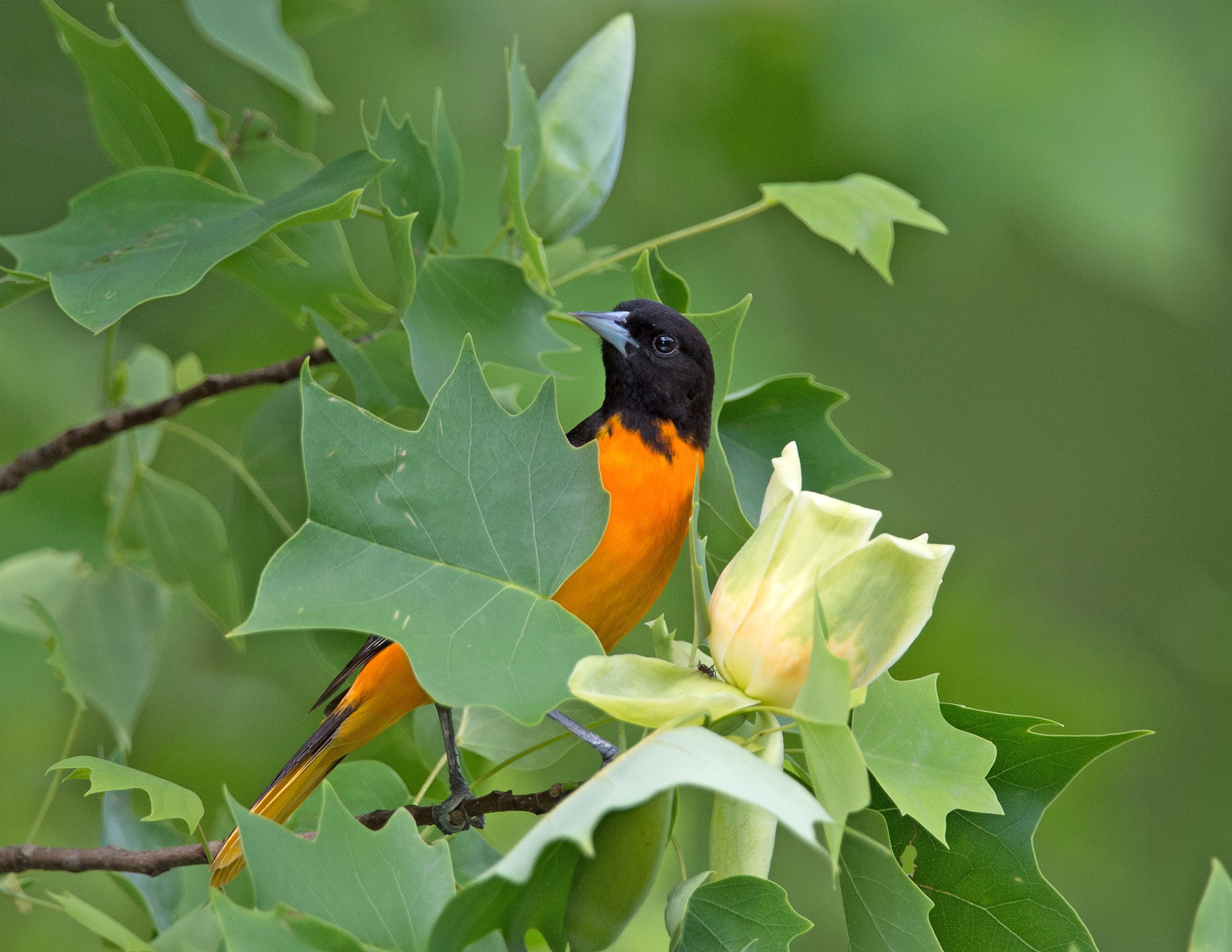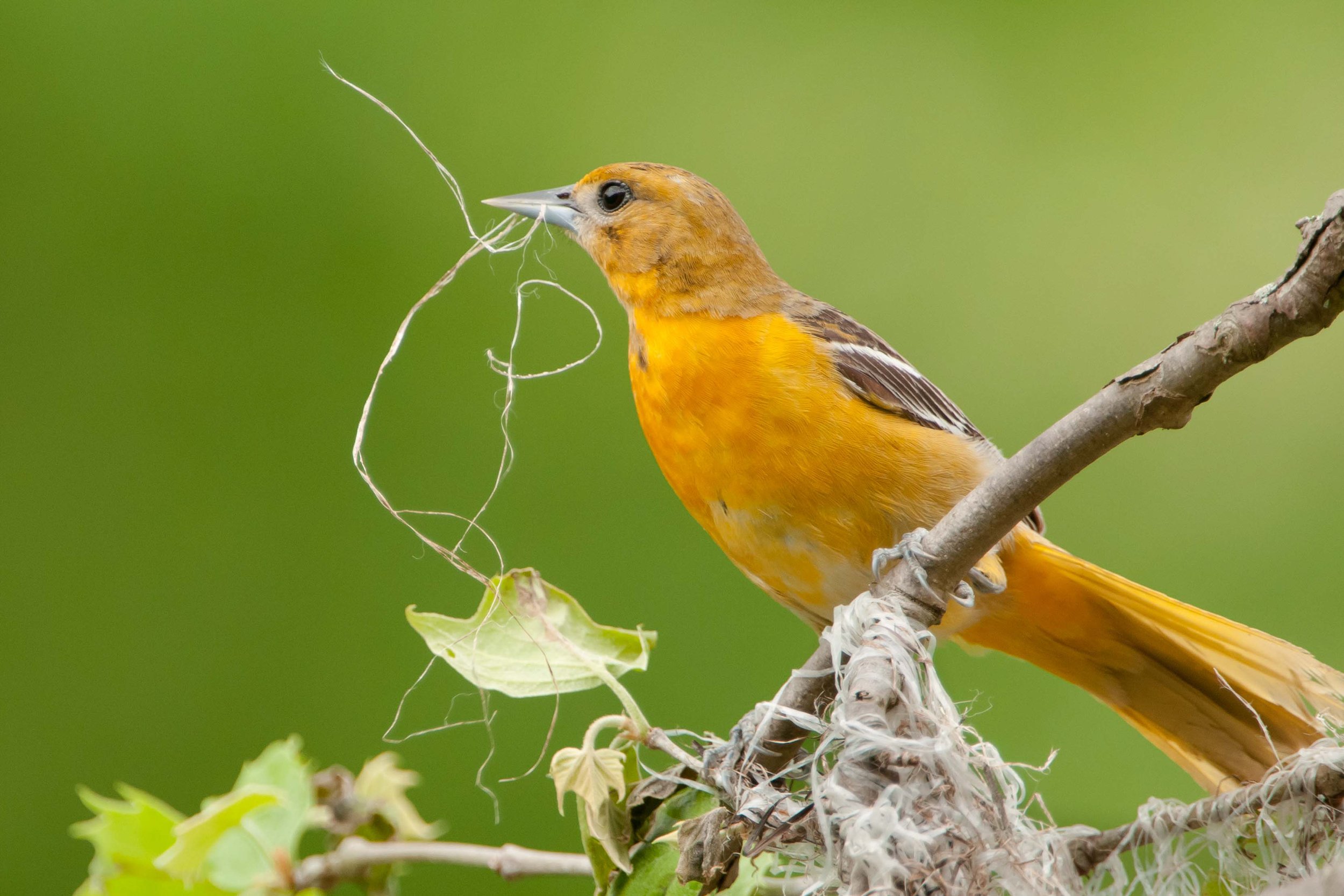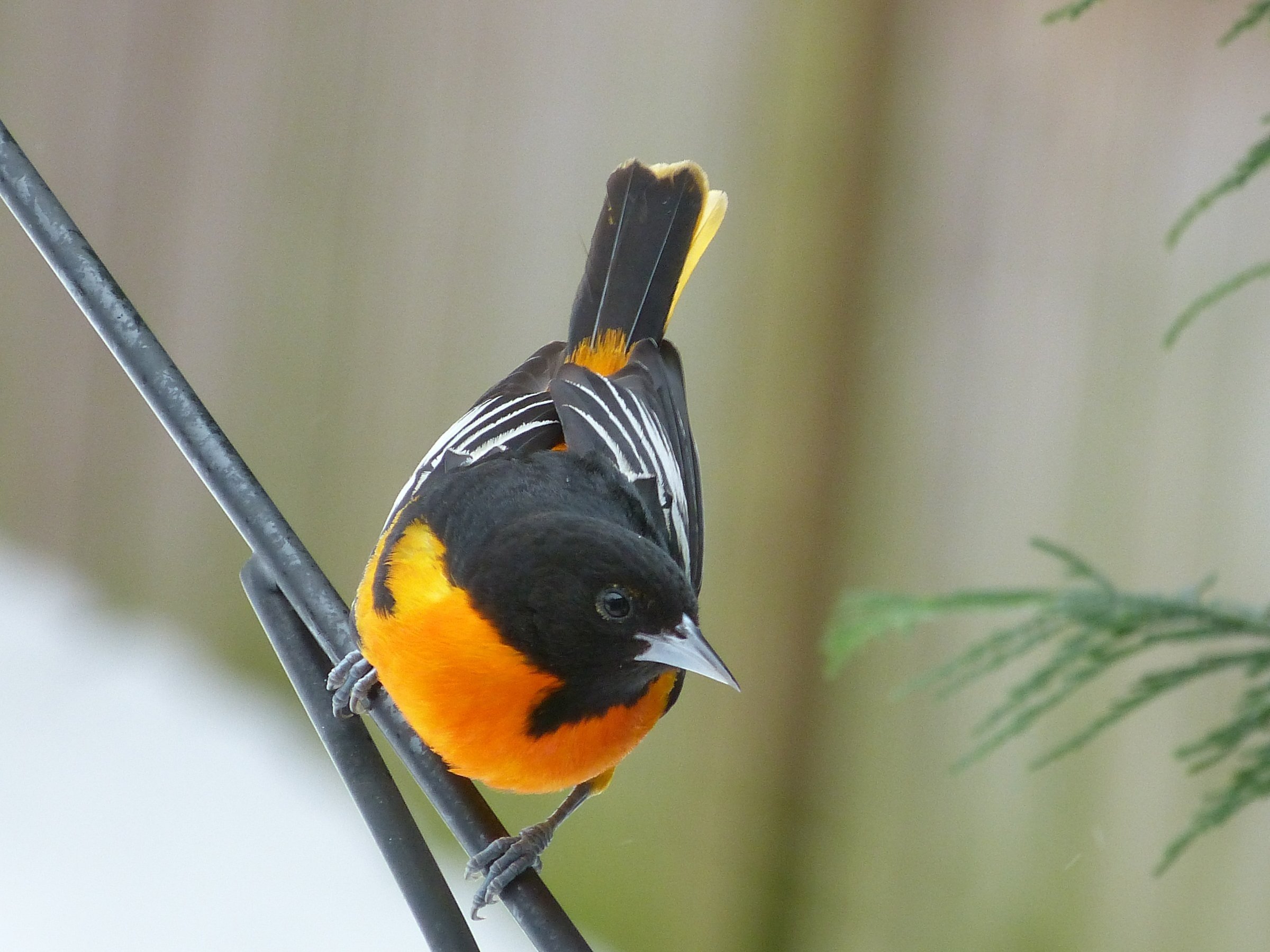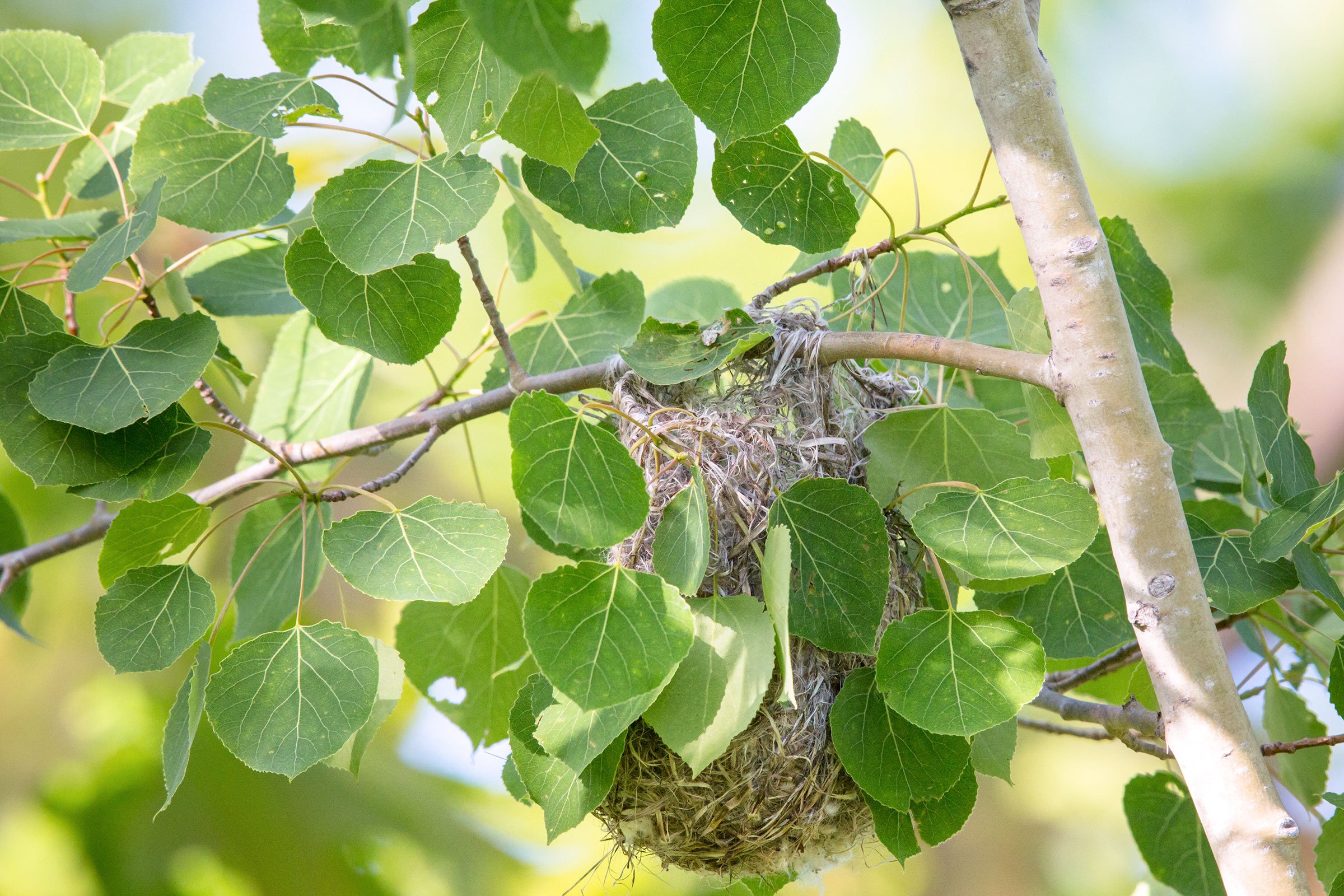Audubon at Home Sanctuary Species: Baltimore Oriole (Icterus galbula)
Baltimore Oriole (male) by Randy Streufert
This songbird is named for its orange and black colors - the same chosen by Sir George Calvert (1st Baron of Baltimore, Maryland) for his coat of arms.
The male has an all black head and throat, black and orange wings and tail with a white wing bar and bright orange chest and underparts. Females and young trade the black for olive and dusky coloring, and have two wing bars. The loud, clear, flute-like whistle of the male heralds its spring return to eastern North America from its winter residence in Mexico and South America. This seasonal movement makes orioles a Neo-tropical Migrant, along with other songbirds such as tanagers, vireos, and most thrushes and warblers. Its preferred habitats are flowering orchards, tall shade trees of country roads, towns and backyards, and wood-edges near streams.
To learn more about ID, range, breeding, and voice, visit Cornell’s All About Birds
| What Baltimore Orioles Need | How Can We Help |
|---|---|
| Food and Water: Orioles glean trees and shrubs for caterpillars, including webworms, tent caterpillars, tussock, gypsy and brow-tailed moth caterpillars, and a host of beetles, ants, grasshoppers, scale insects, and wood borers. A "natural insecticide," this insect-eating machine reduces the pest populations of landscapes they visit. Orioles are frugivores--they love fruit, such as wild cherries, juneberries, mulberries, grapes, and blackberries--and they probe flowers for nectar. |
|
| Shelter:Orioles will seek shelter in stands of tall trees with full canopies and dense hedgerows. Large leafy species like oaks, maples, elms, sycamores, ash and sweetgum are some of their favorite haunts. |
|
| Nesting: Males arrive in spring before females. He displays before her, bowing and spreading his wings to show his colors. Females build the nest 25 to 35 feet above the ground, a swinging sock-like pouch woven and lined with plant fibers, hair, string, or grass, hanging from outer branches of maple, elm, or sycamore. Their preferred habitat is open woodland, forest edge, river banks, and small groves of trees, as well as parks and suburban woodlands with tall trees. Baltimore Orioles often nest in American elms, but will build in other trees, especially maples and cottonwoods. |
|
| Other Threats:
|
|
Additional Resources:
How Orioles Build Those Incredible Hanging Nests
Where to see Baltimore Orioles and their Habitat:
Great Falls Park (Fairfax), Dyke Marsh, Algonkian Regional Park (Loudoun), and Leopold's Preserve (Prince William)
Find more using eBird Data: Narrow the view by entering your county in the “DATA FOR:” filter





